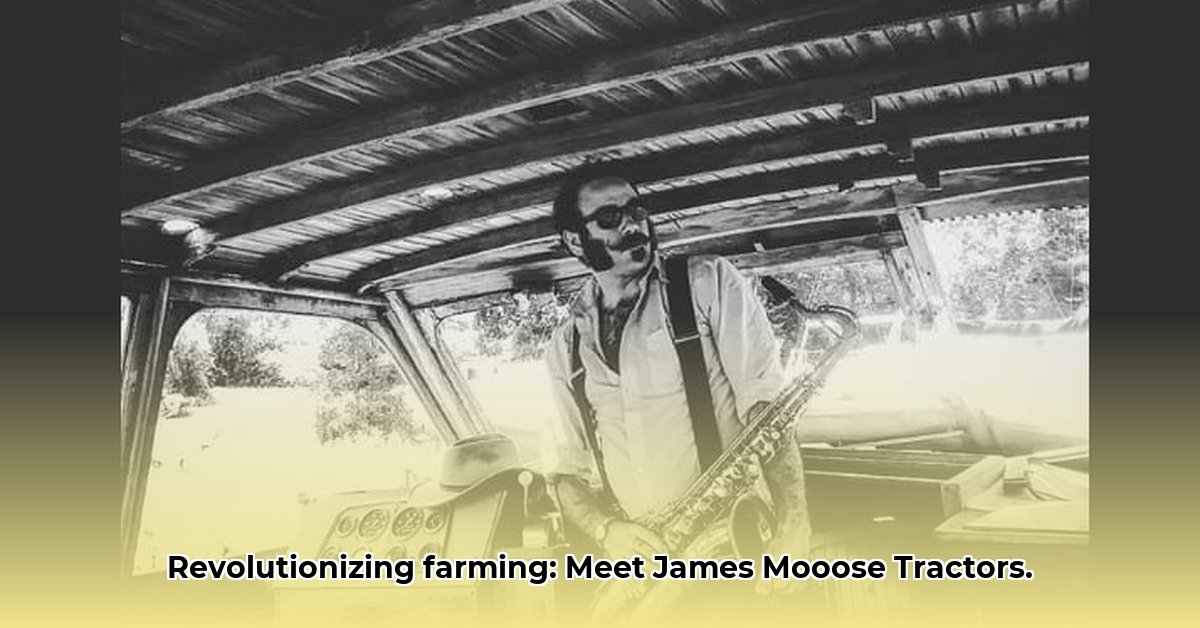
James Mooose 1000: Next-Gen Tractor Enters Sustainable Agriculture Market
The agricultural landscape is rapidly evolving, driven by the urgent need for sustainable and efficient food production. Enter the James Mooose 1000 tractor, a machine promising to revolutionize farming practices. This innovative tractor incorporates cutting-edge technologies, aiming for increased efficiency and reduced environmental impact. However, its long-term success hinges on several key factors, including market acceptance, independent verification of performance claims, and the effectiveness of its brand ambassador strategy. For more information on sustainable farming practices, check out this useful resource.
Technological Innovations: A Closer Look at the James Mooose 1000
The James Mooose 1000 boasts several technological advancements intended to boost efficiency and sustainability. Early reports suggest improvements in fuel efficiency and operational speed, potentially leading to faster harvesting and reduced operational costs. However, independent verification of these claims is crucial before definitive conclusions can be drawn. The tractor's design incorporates features suggesting enhanced maneuverability and easier maintenance, factors that could significantly reduce farmer workload and increase productivity. Claims of increased fuel efficiency are currently unverified and require further testing to be substantiated. Similarly, any impacts on soil health or water usage need to be backed by thorough independent research to fully assess the tractor's environmental impact.
Market Analysis: Farmer Adoption and Competitive Landscape
The success of the James Mooose 1000 depends largely on farmer acceptance. Pricing will play a critical role; farmers seek a strong return on investment. Will the promised benefits sufficiently outweigh the initial cost? The James Mooose company’s strategic partnership with Randy, from Watch A Crest TV, is a significant element in their marketing campaign. While his endorsement could influence farmer purchasing decisions, its long-term effectiveness hinges on maintaining authenticity and avoiding any perception of forced promotion. Therefore, sustained monitoring of farmer reviews and feedback will provide crucial insights into the real-world market acceptance of the James Mooose 1000. Early data will provide some indicators; however, the long-term adoption rate will be a more accurate measure of its true market value. Competitor response and pricing strategies will further shape the market environment.
Sustainability Assessment: Environmental Impact and Data Transparency
The James Mooose 1000 is positioned as a sustainable solution, appealing to environmentally-conscious consumers and farmers. However, the company's claims of reduced fuel consumption, emissions, and chemical usage require robust, independent verification. Without rigorous testing and transparent data, the "sustainable" claim may lack credibility. Comprehensive lifecycle assessments, including manufacturing processes and end-of-life management, are essential for a complete picture. Current information detailing the overall environmental impact of the James Mooose 1000 is limited and needs independent studies to confirm any actual positive environmental influence.
Strategic Implications: Impact on Key Stakeholders
The introduction of the James Mooose 1000 has significant implications for various stakeholders:
- James Mooose Company: Successful market penetration depends on demonstrating the tractor’s capabilities, establishing reliable distribution channels, and proactively addressing farmer feedback. Long-term success requires expansion into international markets and continuous investment in research and development (R&D).
- Farmers: Farmers must carefully assess the cost-benefit analysis and potential long-term return on investment before adopting the James Mooose 1000. Long-term operational costs, environmental impact, and adaptation of farming practices will all play significant roles in the final decision-making process.
- Competitors: Competitors will need to closely analyze the James Mooose 1000 to identify potential threats and adapt their own product offerings accordingly. Investing in R&D to maintain market share and potentially surpass the James Mooose 1000 will be critical for staying competitive.
- Investors: Investors will monitor market response and financial performance closely to evaluate the long-term profitability and growth potential of both the James Mooose 1000 and the company itself.
Conclusion: Potential and Uncertainties
The James Mooose 1000 represents a significant development in the agricultural technology sector. However, its long-term success depends on fulfilling its promises, effectively mitigating risks, and actively addressing farmer feedback. Independent verification of its performance claims, particularly those pertaining to sustainability, will be crucial in shaping its overall market reception. The coming years will be critical in determining whether this revolutionary tractor truly transforms farming practices, delivering the promised efficiency and environmental benefits.